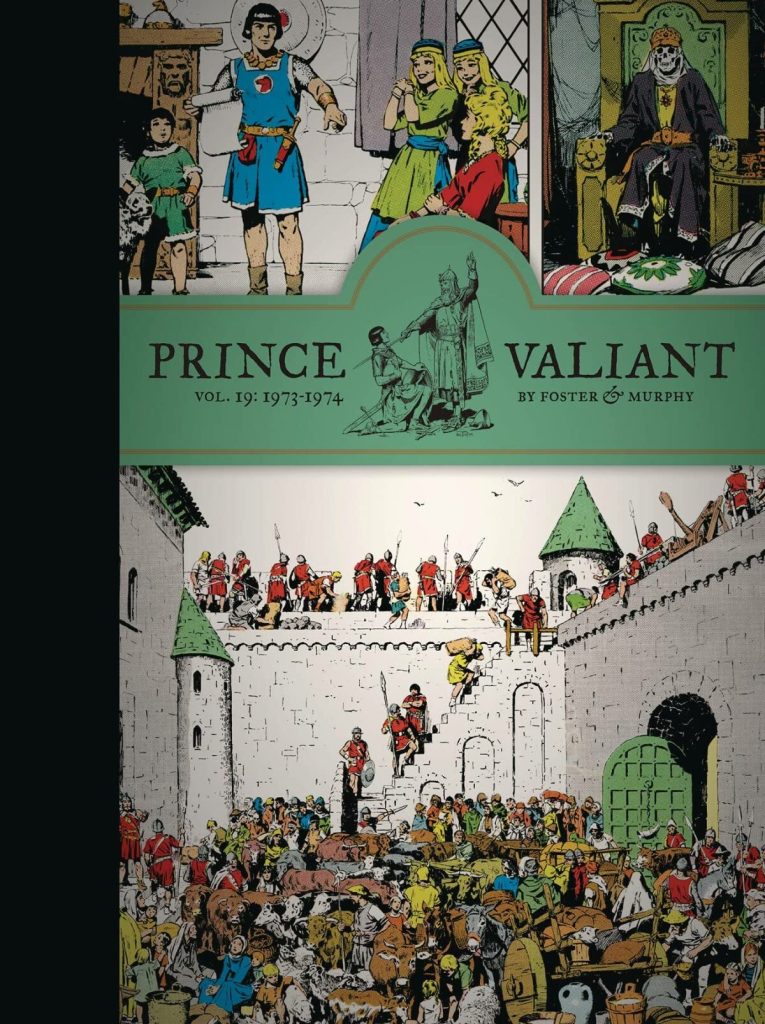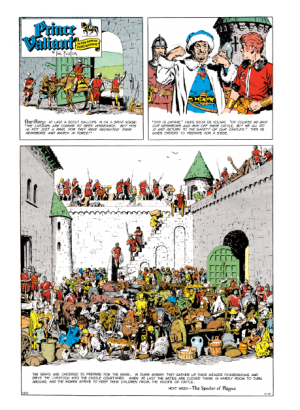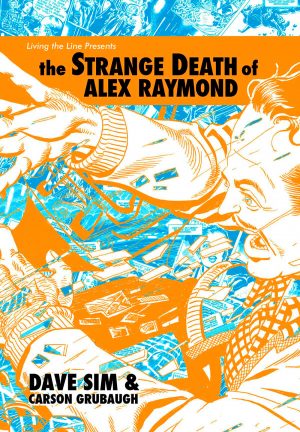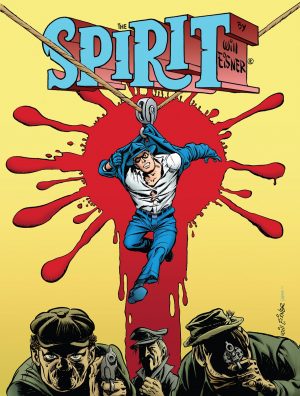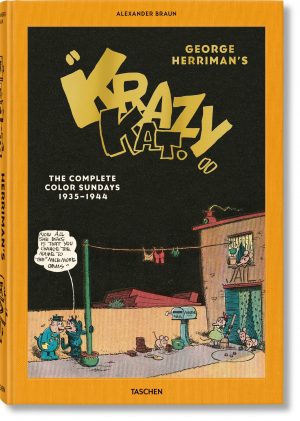Review by Frank Plowright
This is the first complete volume by the Prince Valiant creative team that saw out the 1970s, although only a few pages from Vol. 18 weren’t produced in the new manner. Hal Foster now writes the strip he created and provides sketched layouts for John Cullen Murphy to supply the finished art. Murphy’s cultured pages display an artist almost Foster’s equal, and his pages follow the disciplined storytelling of seven small exquisitely composed panels in three tiers, occasionally interrupted by a stunning illustration occupying two-thirds of an oversized page. They’re often scenes of serene beauty, but the sample page is incredibly busy as a castle prepares for a siege, and of all the Prince Valiant pages he drew over the years Murphy selected it as his favourite. The sheer amount of work involved goes way beyond the call of duty with 29 soldiers alone, never mind a couple of dozen other people and all the livestock.
As Val and his family returned to England at the end of the previous volume, Arn requested permission to accompany a new Viking friend back to Thule, the island kingdom ruled by Val’s father. It’s an uneasy friendship between Arn and Boltarson as they have different approaches to problem solving, the Viking’s tending toward direct attack, and Arn more considered, which initially has Boltarson believing him cowardly. With that definitively disproved Arm arrives in Thule to fall in love for the first time.
While naturally dramatising the circumstances, Foster’s plotting is nuanced, and present day readers are still likely to be entranced by the clever way Arn attempts to solve two problems at once, and by the way Foster closes off the battle aspect of his plot. Arn continues to be the focus for most of this volume. With him as the primary character Foster is able to introduce story elements not possible with Val taking the spotlight. Arn stakes his independence, and he’s noble, smart and well-intentioned, but lacks the judgement of character that comes with experience. That’s provided by Paul, the rogue of a squire he engages whose advice and loyalty is strictly mercenary, and subsequently by his father’s old friend Sir Gawain.
It’s only toward the end of this collection that Val again becomes the focus, scouting those gathered around the fearsome giant Karak, a threat to the residents of Thule’s inner lands. It’s a type of story Foster has used before, with Val posing as something other than a prince to infiltrate his enemies, but the joy is in the detail and Val’s ingenuity in dealing with someone dangerous.
How long has it been since any Prince Valiant collection has been anything other than five star material? This doesn’t break the streak.
Strictly adhering to a cut-off point coinciding with the year’s end, the final 1974 page, rather strangely page 1977 of the continuity, stops mid-story, to be picked up in Vol. 20. You can also find these stories, not nearly as sympathetically coloured, in earlier Fantagraphics Prince Valiant paperbacks Vol. 42: Arn’s Trip to Thule, Vol. 43: Blood and Tears and Vol. 44: Harak the Terrible.
